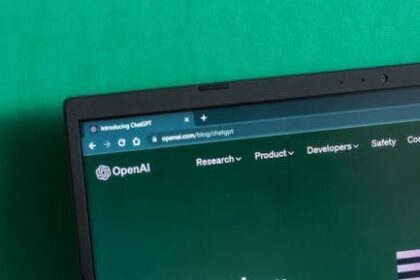Customer Journey Mapping with Data: A Comprehensive Guide
Customer Journey Mapping (CJM) stands as a foundational methodology for understanding and improving the customer experience (CX). At its core, CJM involves visualizing the entire process a customer goes through when interacting with a company, from initial awareness to post-purchase advocacy. This comprehensive visual representation encompasses various stages, touchpoints, emotions, pain points, and opportunities. Traditionally, journey mapping has relied heavily on qualitative insights, drawing from interviews, focus groups, and anecdotal evidence. While these qualitative inputs offer invaluable depth and empathy, their inherent subjectivity and limited scope can restrict the accuracy and scalability of the resulting maps. The modern imperative, therefore, is to transition towards a data-driven approach to CJM, leveraging a wealth of quantitative and qualitative data to paint a precise, actionable, and continuously evolving picture of the customer’s interaction landscape.
The essence of a robust customer journey map lies in its ability to illuminate the customer’s perspective. It shifts the organizational focus from internal processes to external customer realities. Key components of any journey map typically include:
- Personas: Detailed profiles of target customers, embodying their demographics, behaviors, motivations, and goals.
- Stages: The distinct phases a customer progresses through in their relationship with a company (e.g., Awareness, Consideration, Purchase, Service, Retention, Advocacy).
- Touchpoints: Every interaction point between the customer and the company (e.g., website visit, email, social media ad, customer service call, in-store experience, product usage).
- Customer Actions: What the customer does at each stage and touchpoint.
- Emotions/Mindset: How the customer feels at various points, their thoughts, and their state of mind.
- Pain Points: Challenges, frustrations, or roadblocks the customer encounters.
- Opportunities: Areas for improvement, innovation, or differentiation identified through the mapping process.
- Internal Processes/Systems: The underlying operational elements supporting each touchpoint.
The Imperative of Data-Driven Customer Journey Mapping
In an era defined by abundant data, relying solely on qualitative inputs for CJM is akin to navigating a complex cityscape with only a hand-drawn sketch. While the sketch offers a conceptual overview, it lacks the precision, real-time updates, and comprehensive detail necessary for optimal navigation. Traditional CJM, often based on assumptions, limited sample sizes, or historical anecdotes, can lead to skewed perceptions and misinformed strategic decisions.
Data-driven CJM transcends these limitations by grounding every element of the map in verifiable facts. It transforms the exercise from a speculative art into a verifiable science. This shift is critical for several reasons:
- Accuracy and Objectivity: Data provides an objective lens, correcting biases and validating hypotheses derived from qualitative research. It moves beyond “what we think” to “what we know” about customer behavior.
- Scale and Scope: Data allows for the analysis of vast customer populations, revealing patterns and trends that might be missed in smaller qualitative studies. It enables mapping the journeys of various segments, not just a few archetypes.
- Identification of Hidden Pain Points: High-volume data can uncover subtle but significant friction points that individual customer interviews might not articulate, such as unusual navigation paths, abandoned carts at specific stages, or high repeat calls for particular issues.
- Quantification of Impact: With data, businesses can quantify the impact of pain points (e.g., lost revenue due to a convoluted checkout process) and measure the ROI of improvements implemented based on journey map insights.
- Personalization and Segmentation: Data enables granular segmentation of customers and the creation of highly personalized journey maps, tailored to specific behavioral patterns or demographic characteristics.
- Proactive Problem Solving: By tracking key metrics, organizations can identify emerging issues before they escalate, allowing for proactive intervention rather than reactive damage control.
- Continuous Optimization: Data provides the foundation for ongoing monitoring and iterative refinement of the customer journey, ensuring that maps remain relevant and actionable in a dynamic market.
- Organizational Alignment: Data-backed insights lend credibility to journey mapping initiatives, fostering greater cross-functional alignment and buy-in for CX improvements across departments.
The “garbage in, garbage out” principle applies acutely to data-driven CJM. The quality, relevance, and integration of the data sources directly determine the utility and accuracy of the resulting journey maps. Therefore, a meticulous approach to data collection, cleansing, and analysis is paramount.
Types of Data for Customer Journey Mapping
A holistic data-driven CJM requires a confluence of both quantitative and qualitative data. While quantitative data provides the “what” and “how much,” qualitative data offers the “why” behind customer behaviors and sentiments.
Quantitative Data:
Quantitative data encompasses measurable, numerical information that can be statistically analyzed to identify trends, patterns, and anomalies.
-
Website Analytics Data:
- Source: Google Analytics, Adobe Analytics, Matomo, Heap Analytics.
- Insights: Page views, unique visitors, time on page, bounce rate, exit pages, conversion rates (e-commerce, lead forms, sign-ups), traffic sources (organic search, paid ads, social, direct, referral), user flow paths, device usage (mobile, desktop), geographical data.
- CJM Application: Identifying common entry/exit points, understanding digital touchpoint effectiveness, pinpointing areas of friction (high bounce, low conversion), tracking goal completion across journey stages.
-
Customer Relationship Management (CRM) Data:
- Source: Salesforce, HubSpot, Zoho CRM, Microsoft Dynamics 365.
- Insights: Purchase history, customer lifetime value (CLV), interaction logs (emails, calls, chats), lead sources, sales pipeline stages, support ticket history, resolution times, contact preferences, demographic information.
- CJM Application: Tracking customer progress through sales and service stages, understanding repeat purchases, identifying loyal customers, segmenting customers based on value or behavior, linking marketing touchpoints to sales outcomes.
-
Marketing Automation Data:
- Source: Marketo, Pardot, HubSpot Marketing Hub, Mailchimp, Braze.
- Insights: Email open rates, click-through rates (CTR), conversion rates from campaigns, lead scoring, campaign attribution, personalized content engagement, SMS engagement.
- CJM Application: Assessing the effectiveness of marketing communications at various journey stages, identifying which content resonates, optimizing lead nurturing paths, personalizing messages based on journey progression.
-
Transaction Data:
- Source: ERP systems (SAP, Oracle), POS systems, e-commerce platforms (Shopify, Magento).
- Insights: Purchase frequency, average order value (AOV), product preferences, popular bundles, return rates, refund reasons, cross-sell/upsell effectiveness.
- CJM Application: Understanding post-purchase behavior, identifying product adoption patterns, evaluating customer loyalty programs, optimizing return processes, revealing churn indicators (e.g., declining purchase frequency).
-
Call Center/Customer Service Data:
- Source: Zendesk, Intercom, Freshdesk, Five9, Genesys.
- Insights: Call duration, wait times, first call resolution (FCR), number of interactions per issue, customer service satisfaction (CSAT) scores, common inquiry types, agent performance metrics.
- CJM Application: Pinpointing service-related pain points, understanding reasons for repeated contact, identifying gaps in self-service options, evaluating the efficiency of support touchpoints. Sentiment analysis of call transcripts can also provide qualitative insights.
-
Social Media Analytics Data:
- Source: Brandwatch, Sprout Social, Hootsuite, native platform insights (Facebook Insights, Twitter Analytics).
- Insights: Engagement rates (likes, shares, comments), reach, impressions, follower growth, sentiment analysis (positive, negative, neutral mentions), mentions, hashtag performance.
- CJM Application: Monitoring brand perception at the awareness stage, identifying social touchpoints, understanding customer sentiment towards products/services, discovering emerging trends or issues.
-
Mobile App Analytics Data:
- Source: Firebase, Mixpanel, Amplitude, Localytics.
- Insights: App downloads, active users, session duration, feature usage, user flow within the app, crash reports, uninstalls, in-app purchases.
- CJM Application: Mapping mobile-specific user journeys, identifying friction points within the app interface, optimizing feature adoption, understanding user retention in mobile channels.
-
Voice of Customer (VoC) Feedback Data (Quantitative Aspect):
- Source: Survey platforms (Qualtrics, SurveyMonkey, Medallia), NPS tools.
- Insights: Net Promoter Score (NPS), Customer Satisfaction (CSAT) scores, Customer Effort Score (CES), Likert scale ratings.
- CJM Application: Quantifying customer sentiment at specific touchpoints or stages, identifying satisfaction dips, benchmarking CX performance over time, segmenting customers by loyalty or satisfaction level.
-
Market Research Data:
- Source: Syndicated reports, government data, competitive intelligence.
- Insights: Broader demographic trends, psychographic profiles, industry benchmarks, competitive landscape, evolving customer expectations.
- CJM Application: Providing context for customer behavior within a larger market, identifying macro trends that influence the journey, validating persona assumptions.
Qualitative Data:
Qualitative data provides descriptive insights into customer motivations, perceptions, and experiences, offering the “why” behind the quantitative “what.”
-
Surveys (Open-ended Questions):
- Insights: Detailed feedback on specific experiences, suggestions for improvement, perceptions of brand or product.
- CJM Application: Uncovering nuanced pain points, understanding emotional responses, gathering specific anecdotes to enrich quantitative findings.
-
Customer Interviews (One-on-One or Focus Groups):
- Insights: Deep dives into individual experiences, motivations, decision-making processes, unspoken needs, and emotional triggers.
- CJM Application: Building empathetic personas, understanding the context of specific journey stages, validating hypotheses derived from quantitative data, identifying unmet needs.
-
User Testing/Usability Testing:
- Insights: Direct observation of users interacting with products, websites, or apps; identification of usability issues, confusing interfaces, or unexpected user behaviors.
- CJM Application: Pinpointing micro-level friction points at digital touchpoints, optimizing user flows, understanding task completion rates.
-
Ethnographic Studies:
- Insights: Observing customers in their natural environment, providing rich contextual understanding of their daily lives, habits, and product usage.
- CJM Application: Discovering latent needs, understanding external influences on the journey, identifying real-world challenges not evident in controlled settings.
-
Customer Reviews and Testimonials:
- Insights: Organic feedback on product performance, customer service, delivery, and overall experience, often revealing sentiment and specific issues.
- CJM Application: Identifying common praise or complaints, understanding post-purchase sentiment, informing product development or service improvements.
-
Social Listening and Unstructured Data Analysis:
- Insights: Unprompted conversations, opinions, and sentiment expressed on social media, forums, and online communities.
- CJM Application: Detecting emerging trends, brand perception shifts, competitor analysis, understanding customer needs and preferences in a natural context.
-
Employee Feedback:
- Insights: Front-line insights from sales teams, customer service representatives, and delivery personnel who directly interact with customers.
- CJM Application: Identifying operational bottlenecks, common customer complaints, or internal process inefficiencies that impact the customer journey.
Phases of Data-Driven Customer Journey Mapping
Implementing a data-driven customer journey mapping initiative is a structured process involving several distinct phases. Each phase builds upon the previous, ensuring a comprehensive and actionable outcome.
Phase 1: Define Scope and Objectives
Before diving into data, it’s crucial to establish clear boundaries and goals for the mapping exercise.
- Identify the Specific Journey: Not all customer journeys are equal. Focus on a specific journey to start, such as the new customer onboarding journey, the first purchase journey, the customer support journey, or a specific product adoption journey. This specificity helps in narrowing down relevant data sources.
- Target Persona/Segment: While data will refine personas, an initial understanding of the primary customer segment whose journey is being mapped provides a starting point. Are we mapping for high-value customers, new leads, or struggling segments?
- Business Questions: What specific questions do you aim to answer? Examples: “Why are customers abandoning their carts at step 3 of checkout?”, “What are the common pain points during product onboarding?”, “How can we improve customer retention post-purchase?”, “Which marketing channels are most effective at driving initial awareness for a specific product line?”.
- Key Performance Indicators (KPIs): Define measurable metrics that will indicate success or failure for the journey. These might include conversion rates, CSAT scores, churn rates, average resolution time, or customer lifetime value. These KPIs will be crucial for measuring the impact of subsequent improvements.
- Stakeholder Identification: Determine who needs to be involved from different departments (marketing, sales, support, product, IT). Their input and eventual buy-in are vital.
Phase 2: Data Collection and Integration
This is arguably the most critical and challenging phase, laying the groundwork for reliable insights.
- Identify Data Sources: Based on the defined scope, list all potential internal and external data sources. This includes databases, analytics platforms, CRM systems, marketing automation tools, call logs, survey responses, and social media feeds.
- Data Hygiene and Preparation: Real-world data is often messy. This step involves cleaning, standardizing, de-duplicating, and enriching data. Address inconsistencies, missing values, and formatting issues. Data quality directly impacts the accuracy of the journey map.
- Data Integration: Data often resides in silos. Integrating data from disparate sources into a unified view is essential. This might involve:
- Customer Data Platforms (CDPs): These platforms consolidate customer data from multiple sources to create a persistent, unified customer profile, making it accessible for analysis and activation.
- ETL (Extract, Transform, Load) Tools: Used to extract data from various systems, transform it into a consistent format, and load it into a data warehouse or data lake for analysis.
- APIs (Application Programming Interfaces): Used to connect different software applications and facilitate data exchange.
- Ensure Data Privacy and Compliance: Adhere to regulations like GDPR, CCPA, and industry-specific privacy laws. Implement robust data governance practices to ensure data security, consent management, and ethical use of customer information. Anonymize or aggregate data where individual identification is not required for the analysis.
Phase 3: Persona Development with Data
Move beyond generic personas to data-rich archetypes that reflect real customer segments.
- Leverage Quantitative Data: Use demographic data (age, location, income) from CRM or survey tools, behavioral data (purchase history, website navigation, app usage, email engagement) from analytics and marketing automation platforms, and psychographic data (interests, values, lifestyle) inferred from social media or external market research.
- Segmentation: Group customers into distinct segments based on shared characteristics or behaviors identified through data analysis. For example, high-value loyal customers, new one-time purchasers, frequent support callers, or engaged digital users.
- Validate Assumptions: Use data to challenge or confirm preconceived notions about customer motivations, pain points, and goals. For instance, data might reveal that a significant portion of “tech-savvy” users are actually struggling with a specific digital interface.
- Articulate Data-Backed Pain Points and Motivations: Instead of stating “customers want faster support,” data can show “customers who call support experience an average wait time of 15 minutes, leading to a 30% drop in CSAT for calls over 10 minutes.” This makes personas more actionable.
Phase 4: Journey Stages and Touchpoint Identification (Data-Driven)
Define the chronological progression of the journey and identify all interaction points.
- Map Typical Stages: While the generic stages (Awareness, Consideration, Purchase, Service, Retention, Advocacy) provide a framework, refine them based on specific data patterns. For example, the “consideration” stage for a SaaS product might involve “Free Trial Signup,” “Feature Exploration,” and “Trial Conversion.”
- Identify Touchpoints Across Channels: Use data to map every interaction.
- Digital Touchpoints: Website analytics show pages visited, search queries, ad clicks. Marketing automation reveals email opens, form submissions. Mobile app data shows in-app actions.
- Offline Touchpoints: CRM data indicates sales calls, in-store visits. Call center data tracks phone interactions. Transaction data reflects physical purchases.
- Quantify Interactions: For each touchpoint, overlay quantitative metrics:
- Frequency: How often do customers interact at this point?
- Duration: How long do they spend on average?
- Success/Failure Rates: What percentage complete a desired action? What percentage drop off?
- Engagement Metrics: Click-through rates, time on page, feature adoption rates.
- Cost per Interaction: For internal processes, how much does this touchpoint cost?
Phase 5: Data Analysis and Visualization
This phase brings the data to life on the journey map.
- Mapping Pain Points and Opportunities:
- Friction Points: Identify areas where quantitative data indicates struggle. High bounce rates on specific pages, repeated support calls for the same issue, low conversion rates at a particular checkout step, negative sentiment in social mentions, or long wait times.
- Moments of Truth/Delight: Pinpoint where customers experience positive outcomes or engagement. High conversion rates, positive survey feedback, strong engagement with specific content, high feature adoption, or organic positive social mentions.
- Correlations: Look for relationships between different data points. For example, does a high number of product returns correlate with specific onboarding issues? Does website engagement predict higher customer lifetime value?
- Tools for Visualization:
- Dedicated Journey Mapping Software: Smaply, UXPressia, TheyDo, Miro, Lucidchart. These tools offer templates and features specifically designed for journey mapping, allowing for easy integration of data overlays.
- Business Intelligence (BI) Tools: Tableau, Power BI, Looker Studio. While not strictly journey mapping tools, they excel at visualizing integrated data, creating interactive dashboards that can feed into or complement a journey map.
- Spreadsheets/Presentation Software: For simpler maps, tools like Excel or PowerPoint can be used, though they lack the dynamic capabilities of specialized software.
- Creating the Visual Map:
- Layout: Organize the map clearly, typically with stages horizontally and swimlanes for personas, actions, thoughts, emotions, pain points, and opportunities vertically.
- Data Overlays: Integrate the quantitative data directly onto the map. Use color-coding (e.g., red for pain, green for delight), numerical metrics, graphs, and charts at relevant touchpoints. For example, showing conversion rates at each step of a digital funnel, or CSAT scores for each service interaction.
- Qualitative Integration: Weave in qualitative insights (customer quotes, interview snippets, common themes from surveys) to provide context and empathy alongside the numbers.
Phase 6: Insights Generation and Actionable Recommendations
The goal is not just to map, but to act. This phase translates data into strategic directives.
- Translating Data into Narratives: Don’t just present raw data. Tell the story of the customer’s experience, explaining why certain metrics are high or low, using qualitative insights to humanize the numbers. For example, “Our data shows a 40% drop-off at the payment page (quantitative pain point). Qualitative interviews revealed that customers found the number of required fields overwhelming and confusing (qualitative ‘why’).”
- Identifying Root Causes: Go beyond surface-level observations. Why is the bounce rate high? Is it poor content, slow loading times, irrelevant ads, or a broken link? Data from various sources helps diagnose the underlying issues.
- Brainstorming Solutions: For each identified pain point, generate potential solutions. These could range from A/B testing new website designs, personalizing email content, improving self-service options, streamlining internal processes, or retraining customer service agents.
- Prioritization: Not all problems can be solved at once. Prioritize opportunities based on their potential impact (e.g., revenue increase, churn reduction, CSAT improvement) and the effort required for implementation. A common framework is the “Impact vs. Effort” matrix.
- Formulating Actionable Recommendations: Each insight should lead to concrete, measurable recommendations, assigned to specific teams or individuals. For example, “Recommendation: Reduce average call wait time by 50% for high-value customers. Owner: Customer Service Manager. Action: Implement priority queuing system. Target KPI: Wait time.”
Phase 7: Implementation, Monitoring, and Iteration
CJM is not a one-time project; it’s a continuous improvement cycle.
- Implement Changes: Execute the prioritized recommendations. This often involves cross-functional collaboration and project management.
- Establish Ongoing Monitoring Mechanisms: Create dashboards and reports (often using BI tools) that track the key metrics identified in Phase 1 (KPIs) and monitor the impact of the implemented changes. Set up alerts for significant deviations.
- Continuous Optimization: The customer journey is dynamic, influenced by market changes, competitor actions, and evolving customer expectations. Regularly review and update journey maps (e.g., quarterly or semi-annually) based on new data and feedback. Conduct mini-mapping exercises for specific problem areas.
- Measure the Impact: Quantify the ROI of CX improvements. Did the reduced wait times lead to higher CSAT scores? Did the website redesign result in increased conversion rates and reduced bounce rates? Link improvements back to business outcomes.
Advanced Techniques and Considerations
As organizations mature in their data-driven CJM capabilities, several advanced techniques can further enhance insights and actionability.
-
Predictive Customer Journey Mapping:
- Concept: Utilizing machine learning algorithms to analyze historical customer data and predict future behaviors, needs, or potential pain points.
- Application: Identifying customers at risk of churn before they disengage, predicting the next best action for a customer, forecasting product adoption rates, or anticipating future support needs.
- Data Sources: Extensive historical transactional, behavioral, and demographic data.
- Tools: Specialized machine learning platforms, data science teams.
-
Real-time Journey Mapping and Orchestration:
- Concept: Monitoring customer actions in real-time and dynamically adjusting the journey or communication based on immediate behavior.
- Application: Sending a personalized email to a customer who just abandoned their cart, displaying a pop-up with relevant FAQs when a user shows signs of confusion on a webpage, or offering proactive support based on in-app behavior.
- Data Sources: Streaming data from websites, apps, IoT devices, and real-time CRM updates.
- Tools: Customer engagement platforms, real-time analytics engines, AI-powered personalization engines.
-
Omnichannel Journey Mapping:
- Concept: Integrating data across all channels (online, offline, mobile, in-store, call center, social) to create a seamless, unified view of the customer journey, ensuring consistency and continuity.
- Challenge: Data silos are a major hurdle. Customers don’t differentiate between channels; they interact with a brand.
- Solution: Robust CDPs, consistent customer identifiers across systems, and a strong data integration strategy are essential for attributing actions across channels to a single customer profile.
- Application: Understanding how a customer’s online research impacts their in-store purchase, or how a social media query leads to a call center interaction.
-
Emotional Mapping with Data:
- Concept: Moving beyond simple “happy” or “frustrated” labels by using sentiment analysis and advanced textual analysis on qualitative data sources to quantify and track emotional states at different touchpoints.
- Data Sources: Open-ended survey responses, call transcripts, social media comments, review texts.
- Tools: Natural Language Processing (NLP) tools, AI-powered sentiment analysis platforms.
- Application: Identifying specific emotional triggers, understanding the intensity of feelings, and correlating emotional states with behavioral outcomes (e.g., negative emotions leading to churn).
-
Attribution Modeling in CJM:
- Concept: Understanding which touchpoints (and sequences of touchpoints) contribute most significantly to desired outcomes (e.g., conversions, retention).
- Models: First-touch, last-touch, linear, time decay, U-shaped, W-shaped, and algorithmic models (e.g., Shapley value, Markov chains).
- Data Sources: Detailed clickstream data, ad impression data, marketing campaign data.
- Application: Optimizing marketing spend, reallocating resources to high-impact touchpoints, and understanding the complex interplay of interactions leading to conversion.
-
Integrating AI and Machine Learning (ML):
- Automated Data Collection and Analysis: AI can automate the extraction and initial analysis of unstructured data (e.g., sentiment from customer reviews, common themes from support tickets).
- Anomaly Detection: ML algorithms can identify unusual patterns in customer behavior that might indicate a new pain point or an emerging opportunity.
- Personalized Journey Orchestration: AI can dynamically tailor content, offers, and next steps for individual customers based on their real-time data and predicted needs.
- Predictive Analytics for Churn/Next Best Action: As mentioned in predictive mapping, AI/ML is the engine behind these capabilities.
- Chatbots and Virtual Assistants: AI-powered conversational interfaces can act as a crucial data collection point and a real-time touchpoint, providing immediate insights and service.
Challenges and Best Practices in Data-Driven CJM
While the benefits of data-driven CJM are substantial, implementing it successfully comes with its own set of challenges. Adopting best practices can help navigate these complexities.
Challenges:
- Data Silos and Integration Issues: The most common hurdle. Data often resides in disparate systems owned by different departments, making it difficult to create a unified customer view. Lack of consistent identifiers across systems exacerbates this.
- Data Quality and Accuracy: “Garbage in, garbage out” applies here. Inaccurate, incomplete, or inconsistent data can lead to flawed insights and misinformed decisions.
- Lack of Organizational Buy-in and Cross-Functional Collaboration: CJM requires input and action from marketing, sales, product, IT, and customer service. Without executive sponsorship and a culture of collaboration, initiatives can falter.
- Difficulty in Measuring ROI of CJM: Quantifying the direct financial return of journey mapping itself can be challenging, even if the improvements stemming from it are measurable. This can make it hard to secure ongoing funding or resources.
- Overwhelm from Too Much Data: The sheer volume and variety of data can be daunting, leading to analysis paralysis rather than actionable insights.
- Maintaining Maps – They Become Outdated Quickly: Customer behaviors, market conditions, and product offerings change rapidly. A journey map is a living document, not a static artifact.
- Data Privacy and Security Concerns: Navigating increasingly stringent data privacy regulations (GDPR, CCPA) while leveraging customer data is complex and requires robust governance.
- Talent Gap: A shortage of skilled data analysts, data scientists, and CX strategists who can bridge the gap between data and customer experience.
Best Practices:
- Start Small, Iterate, and Scale: Don’t try to map every customer journey for every persona at once. Begin with a high-impact, manageable journey or a critical pain point. Learn, refine your process, demonstrate success, and then expand.
- Secure Executive Buy-in and Cross-Functional Collaboration: Garner support from leadership by linking CJM to strategic business objectives. Establish a cross-functional core team from the outset to ensure diverse perspectives and shared ownership.
- Foster a Data-Driven Culture: Encourage data literacy and a mindset where decisions are informed by evidence, not just intuition. Provide training and resources for employees to understand and utilize data.
- Invest in the Right Tools and Talent: Implement CDPs, analytics platforms, and journey mapping software that support your data integration and visualization needs. Hire or train individuals with expertise in data analysis, UX research, and CX strategy.
- Focus on Actionability, Not Just Mapping: A beautiful map is useless if it doesn’t lead to concrete improvements. Every insight should be tied to actionable recommendations with clear owners and KPIs.
- Regularly Review and Update Maps: Schedule periodic reviews (e.g., quarterly or biannually) to ensure maps remain relevant. Automate data feeds to keep metrics on the map as current as possible.
- Emphasize Storytelling with Data: Present insights in a compelling narrative that resonates with stakeholders. Use visuals, customer quotes, and real-world examples to illustrate the data’s meaning and impact.
- Balance Quantitative and Qualitative Insights: Neither type of data alone provides the full picture. Use quantitative data to identify patterns and scale, and qualitative data to understand the “why” and add empathy.
- Focus on Customer Needs, Not Just Internal Processes: While internal processes impact the journey, the map’s primary focus should always be on the customer’s perspective, their goals, and their experience.
- Implement Data Governance: Establish clear policies and procedures for data collection, storage, usage, and security. Ensure compliance with all relevant privacy regulations.
- Measure and Communicate ROI: Continuously track the impact of journey improvements on defined KPIs. Quantify the business value (e.g., increased revenue, reduced costs, improved retention) and communicate these successes widely to maintain momentum and secure future investment.
- Start with an Initial Hypothesis: Even with data, it helps to start with a working hypothesis about key stages or touchpoints, then use data to validate, challenge, and refine it. This provides structure to the data exploration.
- Don’t Overlook “Dark Data”: This refers to operational data often collected but not used for analytics, such as email metadata, server logs, or unstructured customer service notes. These can hide valuable insights.
- Map the “As-Is” Before the “To-Be”: Understand the current state of the customer journey, including its pain points and inefficiencies, before designing the optimized future state. Data is crucial for accurately depicting the “as-is” journey.
- Consider the Emotional Arc: Use data, especially sentiment analysis and survey feedback, to plot the emotional highs and lows of the customer journey. Understanding where customers feel frustrated or delighted is critical for designing impactful interventions.
- Leverage AI for Pattern Recognition: For large datasets, manual analysis can be overwhelming. AI and machine learning algorithms can rapidly identify correlations, clusters, and anomalies that might indicate significant journey characteristics or problems.
- Integrate Feedback Loops: Build mechanisms to continuously collect customer feedback at key touchpoints (e.g., post-transaction surveys, in-app prompts, NPS surveys) and integrate this data directly into your monitoring dashboards. This creates a real-time pulse on CX.
- Develop a Unified Customer Identifier: To truly achieve an omnichannel view, ensure that a customer’s interactions across different systems and channels can be linked back to a single, persistent customer ID. This is foundational for effective data integration.
- Think Beyond the Transaction: The customer journey extends far beyond the point of purchase. Map the entire customer lifecycle, including onboarding, usage, support, retention, and advocacy. Data from product usage and service interactions is vital for these later stages.
- Visualize Clearly: Even with complex data, the output—the journey map—must be easy to understand and digest for all stakeholders. Use clear visual cues, concise labels, and highlight key takeaways. The map should tell a story at a glance.
- Security and Anonymization: When sharing maps and underlying data with broader teams, ensure sensitive customer information is properly anonymized or aggregated to maintain privacy and compliance.
- Cross-functional Workshops: Involve relevant teams in workshops where the data is presented, and insights are discussed. This collaborative environment ensures different departmental perspectives are considered and fosters shared ownership of solutions.
- Test and Learn: Treat proposed journey improvements as hypotheses. Implement changes, test their impact with A/B testing or pilot programs, analyze the new data, and iterate. This agile approach ensures continuous improvement.
- Document Assumptions: Even with data, some assumptions might be made, particularly where data gaps exist. Document these clearly so they can be revisited and validated as new data becomes available.
- Consider External Data: Don’t limit data sources to internal systems. External data like economic indicators, industry trends, competitor benchmarks, and public sentiment can provide crucial context.
- Map the Ideal State: Once the “as-is” journey is thoroughly understood, define a future “to-be” ideal journey. This provides a clear target for improvements and a roadmap for digital transformation efforts, backed by data.
- Integrate Employee Journey Mapping: Recognizing that employee experience (EX) often impacts customer experience (CX), consider mapping the employee journey related to critical customer touchpoints. Data from HR systems, internal surveys, and operational efficiency tools can be integrated.
- Regularly Train and Educate: Provide ongoing training for teams involved in CJM on data analysis techniques, tool usage, and best practices in CX design. Knowledge sharing is crucial for maturity.
- Storyboards for Complex Journeys: For particularly complex or nuanced journeys, consider breaking them down into smaller storyboards that detail specific scenarios, using qualitative narrative alongside quantitative data.
- Focus on Customer Value: Ultimately, the purpose of data-driven CJM is to increase value for both the customer and the business. Ensure that every identified opportunity aligns with delivering a better customer experience that also drives business outcomes.











